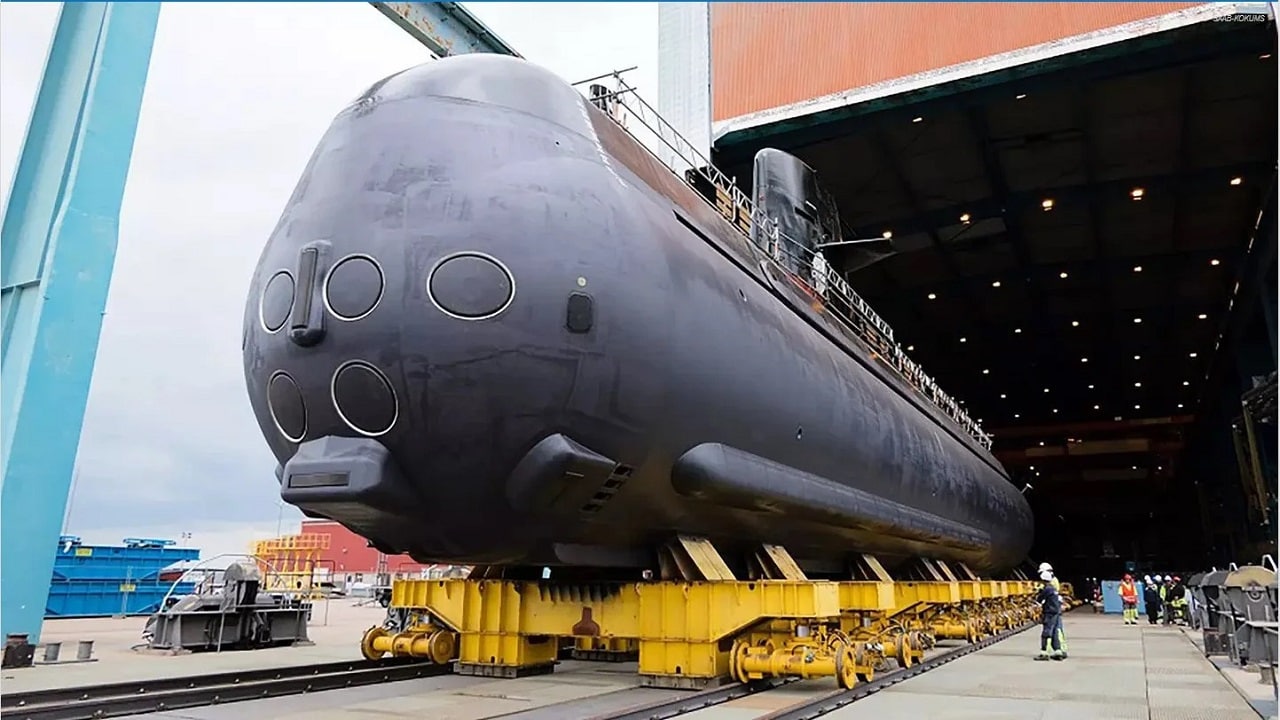The Gotland-class, to be fair, is not exactly a well-known submarine outside of naval circles. However, this submarine made some serious history when it took on the US Navy in a simulation and did the unthinkable. A few months back, the Swedish Defense Material Administration (FMV) announced that it had awarded a mid-life upgrade (MLU) contract to Saab for the Gotland-class submarine HMS Halland. Under the upgrade project, which is reportedly valued at $116.75 million, Saab will carry out modernization and modification work on the submarine – during which time the boat’s existing combat systems will also undergo an overhaul.
Along with the lead boat of the class, the Swedish Navy currently operates three of these diesel-electric submarines, which were designed and built by Kockums shipyard. Developed as a multirole submarine and built between 1990 and 1997, the Gotland-class can be employed in anti-surface warfare (ASuW), anti-submarine warfare (ASW), collection of intelligence including communications intelligence (COMINT) and electronic signals intelligence (ELINT), as well as forward surveillance, special operations, and mine laying – the submarines have proven to be well-suited to each.
The first two submarines of the class have already gone through the MLU program, and as part of the contract, Saab will install more than 50 new systems on HMS Halland. The system systems are to be installed on the Swedish Navy’s new Belkinge-class (A25) submarines, which are now in the production stage.
Gotland-class: Silent Running Thanks to AIP
The Gotland-class are the first submarines in the world to feature a Stirling engine air-independent propulsion (AIP) system, which allows the subs to have an extended endurance of weeks – a capability that had previously only been available in nuclear-powered submarines.
Diesel engine submarines typically need to surface every few days or draw in air from the snorkel to recharge the batteries. Instead, with the Gotland-class, the batteries are saved for times when the submarines need speed but otherwise cruise on the AIP. The subs can reach speeds of eleven knots on the surface and twenty knots submerged.
The technology behind AIP essentially involves storing a supply of oxygen in the submarine in order to run a diesel engine while submerged. Liquid oxygen (LOX) is stored in tanks onboard the submarine and sent to the diesel engine for combustion. The oxygen is mixed with an inert gas such as argon and then sent to the engines. The exhaust gases are cooled and scrubbed to extract any leftover oxygen and argon, while the remaining gases are discharged into the sea after being mixed with seawater. The extracted argon can be mixed with oxygen and sent into the diesel engine.
The use of AIP on a diesel-electric submarine can greatly increase their underwater endurance, allowing them to continuously stay submerged for weeks without surfacing. Another advantage of the AIP system is that the submarines cost far less than a nuclear-powered submarine, but remains deadly quiet while cruising underwater at low speeds, even for weeks at a time.
Gotland Vs. Reagan
The AIP technology proved especially successful when the United States Navy leased the HMS Gotland (A-19) for use in anti-submarine warfare (ASW) exercises in 2004, the submarine was actually able to “sink” the U.S. Navy’s Nimitz-class aircraft carrier USS Ronald Reagan (CVN-76).
The outcome was replicated multiple times and the stealthy Swedish sub was able to “run rings” around the then newly constructed $6.2 billion dollar aircraft carrier, and its strike group.
The U.S. Navy held multiple exercises with the Gotland over the course of a year, and each time the submarine successfully and silently maneuvered around destroyers and nuclear attack submarines. U.S. officials were so impressed (and likely dismayed) that they leased the Swedish boat for another year to understand how it went undetected so successfully.
Steady Improvements for the Gotland-class
The small and cost-effective submarines – which reportedly cost just a third of the Russian Kilo-class boats – were a mere 60.7 meters in length when constructed and later upgraded to 62.7 meters, and displace just under 1,380 tons. The maximum crew is 32 officers and sailors, and the submarines are equipped with four 533 mm torpedo tubes, two 400mm torpedo tubes and 48 weapons mounts.
While the submarines were constructed between 1990 and 1997 and had gone through minor modifications during their respective service lives, the mid-life upgrade has been far more significant and during which the HMS Gotland was actually cut into two so as to allow for larger upgrades.
During the mid-life upgrade more than fifty new systems were installed or modified, and of those twenty are new systems that in the future will be used in the next generation Blekinge-class. The enhancements will enable the boats to conduct an analysis of their surroundings with a so-called Optronic Mast, which will replace the traditional periscope and associated management system.
Yet, they’ll remain just as deadly silent.
Now a Senior Editor for 1945, Peter Suciu is a Michigan-based writer who has contributed to more than four dozen magazines, newspapers and websites. He regularly writes about military hardware, and is the author of several books on military headgear including A Gallery of Military Headdress, which is available on Amazon.com. Peter is also a Contributing Writer for Forbes.

